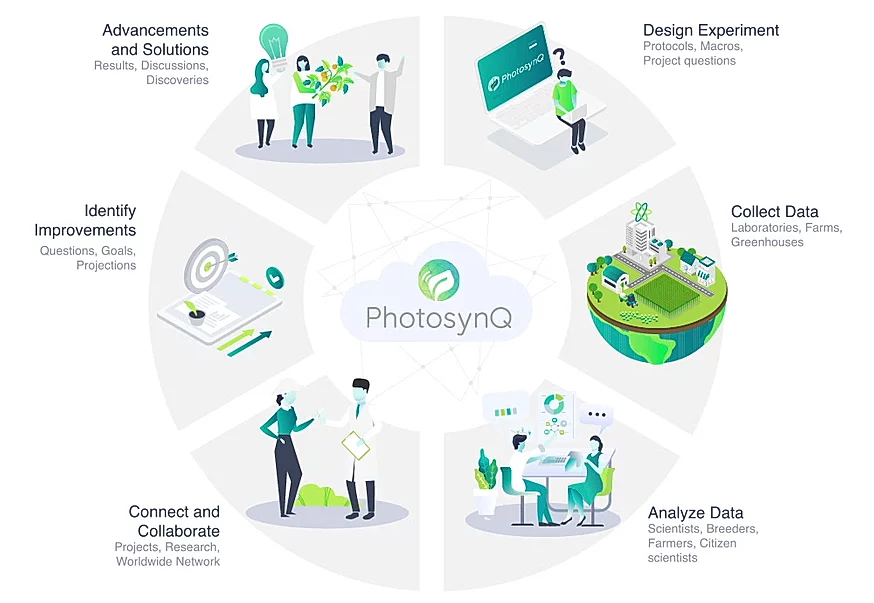# What is PhotosynQ

# Design an Experiment
The PhotosynQ platform allows you to design experiments or join other’s projects through an intuitive and collaborative online application. Use staff-picked protocols and macros or create your own to personalise the data you collect. Further customize your experiments by collecting custom sets of meta-data with each measurement. This additional data, entered by answering Project questions, can be used to filter a data set or be part of the data collected such as plant size, treatment, et cetera. Additionally generated data like dry weight, yield, or absolute chlorophyll content, can be added to the project post measurement data collection for more analytics.
# Collect Data
Data collection is fast and easy using the MultispeQ together with the Android Mobile Application in the field or with the Desktop Application in the lab for bench top experiments. Both applications allow you to collect measurements for created Projects in addition to singular quick measurements. The Desktop Application even allows you to save those quick measurements in a Notebook.
# Analyze Data
The collected data can then be analyzed using the online data analysis tools. They allow the dataset to be filtered and plotted onto scatter, line, and density plots as well as histograms and box plots. In addition to these functions basic statistical tests are available. The data can also be downloaded as a spreadsheet or use the provided python or R libraries as data frames.
# Connect and Collaborate
Projects on PhotosynQ are built with collaboration in mind, allowing researchers from around the world to contribute to a Project. Collaborators can collect data simultaneously anywhere in the world and compare measurements, plots, and statistics on the online application. The forums (opens new window) are a great tool to organize collaboration, or PhotosynQ users can be invited to or join projects on their own.
# Identify Improvements
With the data you and your colleagues have collected and analysed you can now make decisions on what this data means for your research, experiment, or growing operation. The relative chlorophyll parameter can be used to help identify when your plants may need more fertilizer, or the PhiNPQ parameter can be used to see which of your plants is best suited to grow in stressful environments. Your data can even stand as a beginning point to find and answer more scientific questions.
# Advancements and Solutions
Use your results to heighten your yields or choose the next plants for your breeding program. New data can even be collected to add to your data set and give you further insights to improve your plants. With the community and customisable data collection of PhotosynQ platforms, solutions can be found for any of your plant issues or questions from research experiments to community garden management.